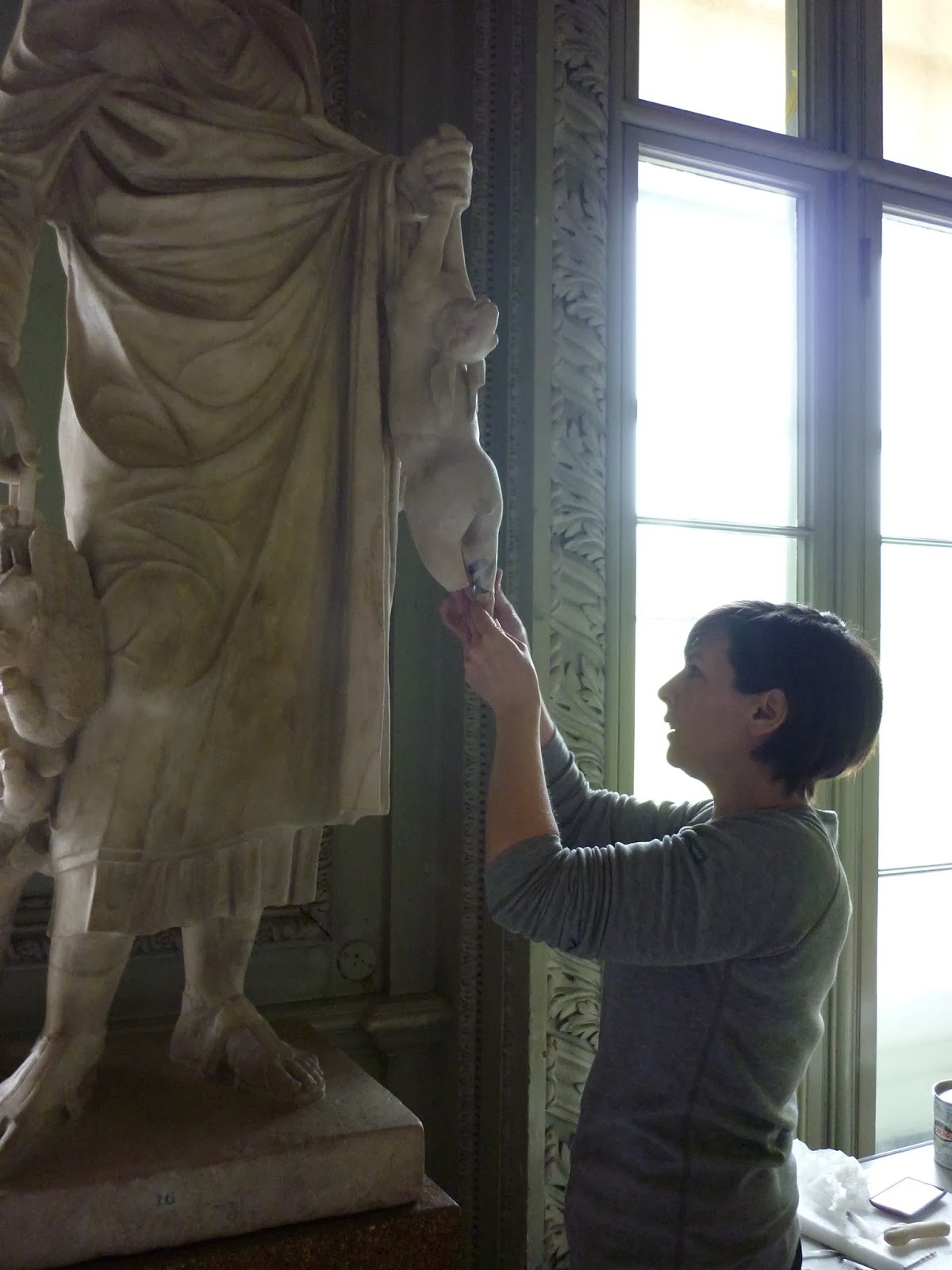Dust is somewhat of a buzzword at National Trust places. Talking to visitors during our Conservation in Action events, surprise is often expressed when we tell them that visitors account for the majority of dust generated within rooms which consists largely of clothing fibres. Skin particles and inorganic matter such as soot and silica also contribute to the make up of dust.
It is important for us to vacuum through the visitor route each day. Any dust that is left in the rooms will be kicked up by visitors during the day and risks settling on the collection, which, given the right conditions (temperature, relative humidity, etc) has the potential to bond to the surface of the item. Dust is hydroscopic, which means that it holds on to moisture. This makes it an ideal playground for bugs and mould, both of which can 'feed' on the dust and greatly enjoy its damp conditions!
It is very important to distinguish between surface dust and what we call ‘historic’ dust. Surface dust is the loose stuff that we aim to remove from the rooms on a regular basis by vacuuming the floors and dusting flat surfaces. ‘Historic’ dust, on the other hand, has undergone a chemical reaction and has bonded to the surface of the item. This makes it impossible to remove without damaging the surface layer of the item. A common example can be seen on gilt-wood furniture and painting frames, where the gilding has taken on a kind of grey-ish hue. If we were to try and remove this dust, we’d end up taken off the top layer of gilding and be left with bare wood! Furthermore, this dust is part of the item and contributes to the atmosphere of the historic interior - shining picture frames and furniture wouldn't fit in with the atmosphere at Petworth!
 |
| The carvings of the east side of the State Bed. You can see the tops of the carvings have the slight grey hue which is a result of the historic dust having adhered to the surface. |
It is for this reason that the gentle removal of dust is such an important step in caring for our collection. We need to limit the risk of dust having the opportunity to get comfortable on the collection! Every Thursday, when the House is closed except for our special Snapshot tours, we have a bit more time to conservation clean the collection and remove the pesky dust!
During our cleaning of Mrs Wyndham’s Bedroom last week, I took a dust sample from the State Bed. I cleaned the carvings on the top of the bed by using a very soft pony-hair brush to remove the surface dust, and had a thin layer of gauze over the end of my vacuum. This meant that the majority of the dust would be collected on the gauze, enabling me to transfer it over to a sticky pad and produce the dust sample.
 |
| The dust sample was then transferred to a sticky pad. |
 |
| The dust that was captured on the gauze - it was a good few millimetres thick! |
Due to the delicate nature of the bed in general and the carvings, the bed isn’t cleaned very often – once every two years at most – so this was the accumulated dust over quite a long period of time!
This accumulation is why it is so important for us to remove the dust from the room on a regular basis – to prevent it being kicked up and settling on the collection and providing a haven for bugs and mould!
Next time you visit us, spare a thought for the dust and so on being brought into the house!
Sarah
Conservation Assistant
Conservation Assistant

.jpg)
.jpg)

.jpg)


















